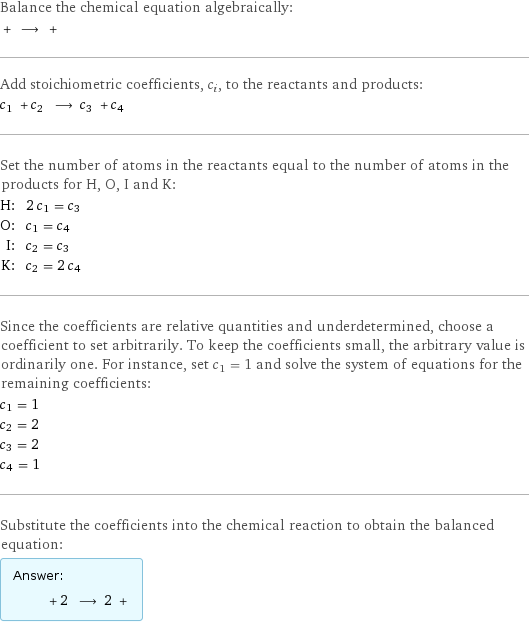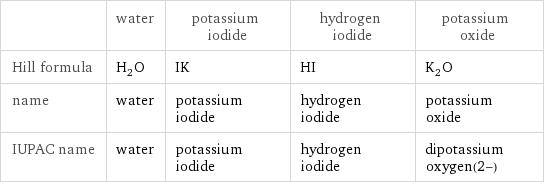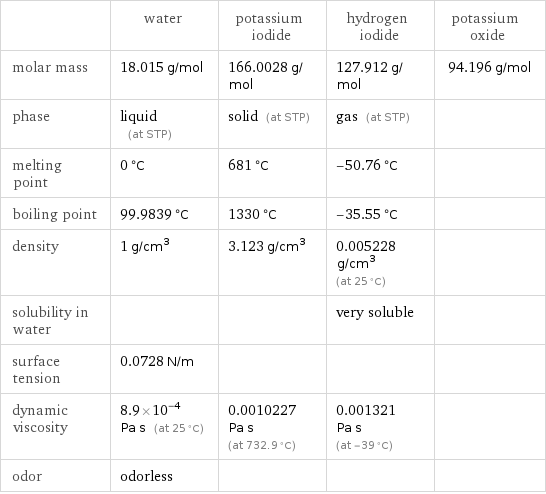Input interpretation

water + potassium iodide ⟶ hydrogen iodide + potassium oxide
Balanced equation

Balance the chemical equation algebraically: + ⟶ + Add stoichiometric coefficients, c_i, to the reactants and products: c_1 + c_2 ⟶ c_3 + c_4 Set the number of atoms in the reactants equal to the number of atoms in the products for H, O, I and K: H: | 2 c_1 = c_3 O: | c_1 = c_4 I: | c_2 = c_3 K: | c_2 = 2 c_4 Since the coefficients are relative quantities and underdetermined, choose a coefficient to set arbitrarily. To keep the coefficients small, the arbitrary value is ordinarily one. For instance, set c_1 = 1 and solve the system of equations for the remaining coefficients: c_1 = 1 c_2 = 2 c_3 = 2 c_4 = 1 Substitute the coefficients into the chemical reaction to obtain the balanced equation: Answer: | | + 2 ⟶ 2 +
Structures

+ ⟶ +
Names

water + potassium iodide ⟶ hydrogen iodide + potassium oxide
Chemical names and formulas

| water | potassium iodide | hydrogen iodide | potassium oxide Hill formula | H_2O | IK | HI | K_2O name | water | potassium iodide | hydrogen iodide | potassium oxide IUPAC name | water | potassium iodide | hydrogen iodide | dipotassium oxygen(2-)
Substance properties

| water | potassium iodide | hydrogen iodide | potassium oxide molar mass | 18.015 g/mol | 166.0028 g/mol | 127.912 g/mol | 94.196 g/mol phase | liquid (at STP) | solid (at STP) | gas (at STP) | melting point | 0 °C | 681 °C | -50.76 °C | boiling point | 99.9839 °C | 1330 °C | -35.55 °C | density | 1 g/cm^3 | 3.123 g/cm^3 | 0.005228 g/cm^3 (at 25 °C) | solubility in water | | | very soluble | surface tension | 0.0728 N/m | | | dynamic viscosity | 8.9×10^-4 Pa s (at 25 °C) | 0.0010227 Pa s (at 732.9 °C) | 0.001321 Pa s (at -39 °C) | odor | odorless | | |
Units
